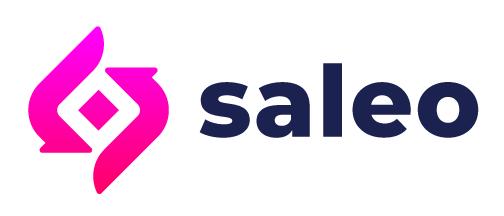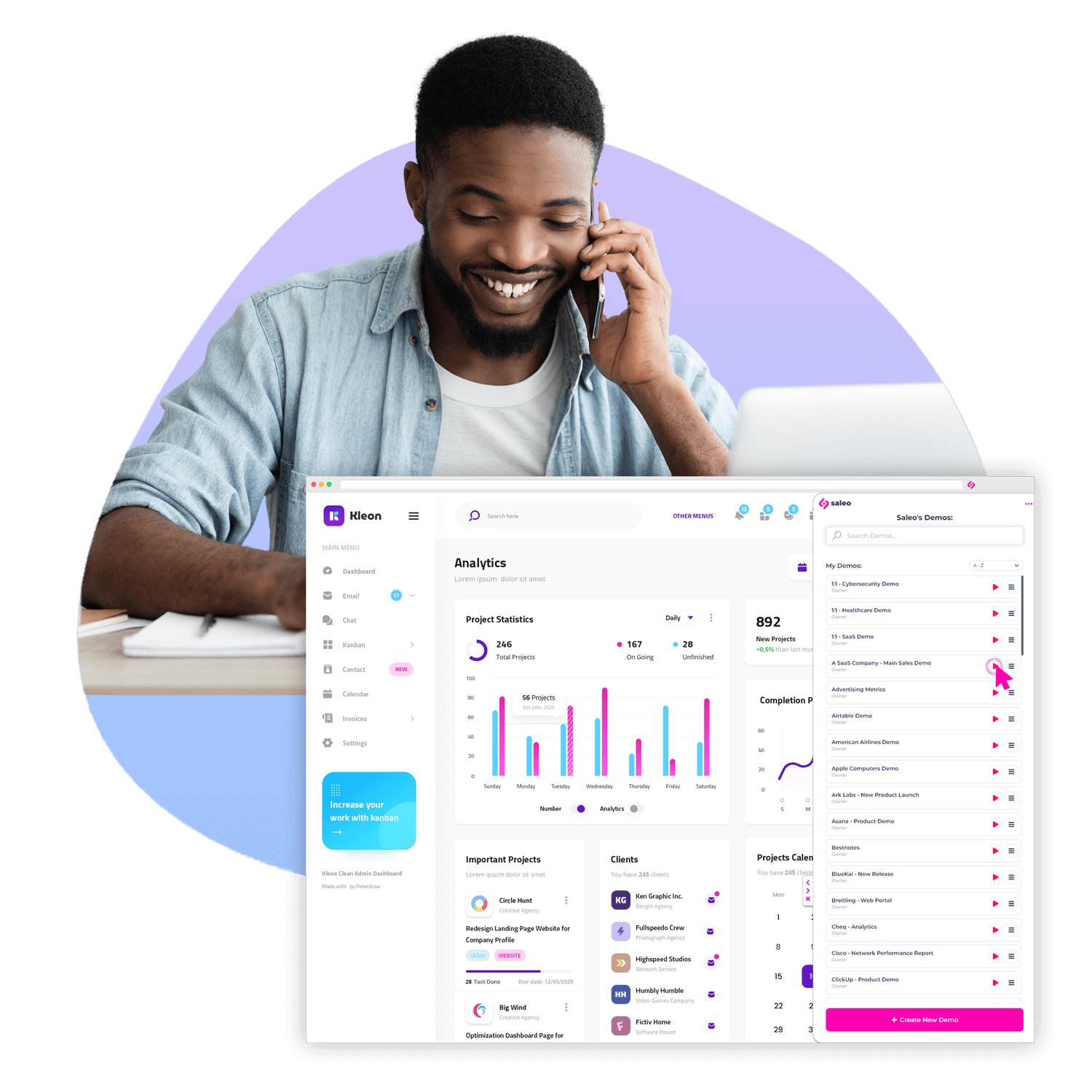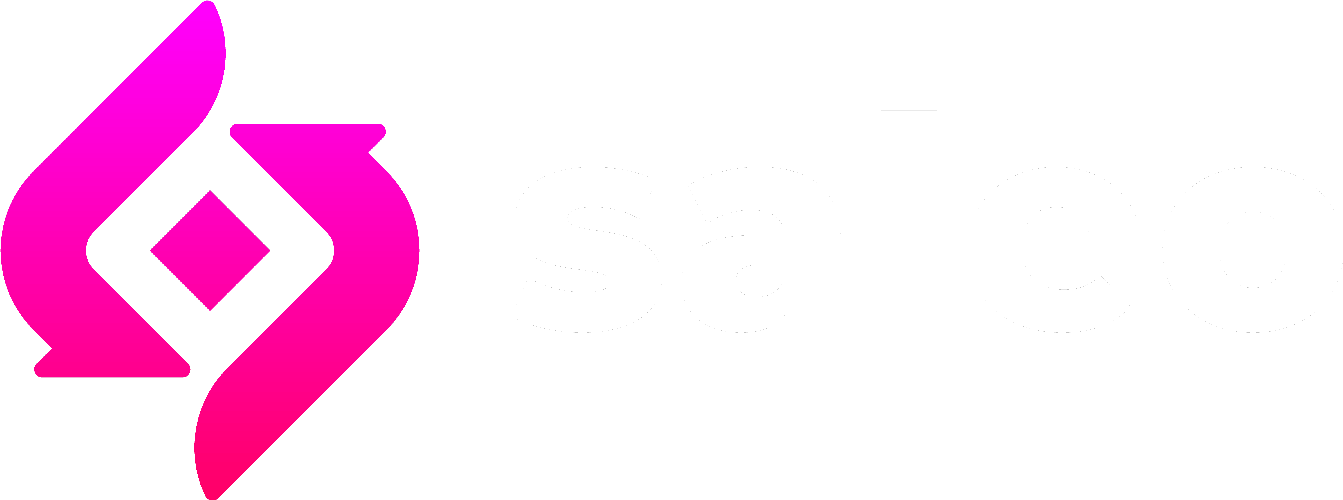Have you ever wondered who penned ‘seeing is believing?’
Well, whoever did deserves an award because they were clearly justifying the existence of sales demos in a few words.
The sales demo is a crucial part of your sales process. It’s when you show off how cool and beneficial your product is and convince customers that it’s exactly what they need. That doesn’t mean that you have to be an expert salesman or saleswoman, though. All you need are some expert tips and tricks for demos that are effective at convincing prospects to buy. Here are our top picks:
Spend More Time in the Discovery Process
When you’re trying to close a B2B sale, the first thing to do is to understand your prospect’s business needs, challenges, and priorities. The goal here is to gain deep insights into your prospects and their exact software needs so you can create an effective solution. This also includes your prospect’s names, titles, roles, and industry to create a bond and optimize communication.
Some key pain discovery questions to consider include:
- How satisfactory is your current product?
- What challenges have you encountered when using product Y, and how do they affect your organization?
- What drawbacks; financial and lost opportunities have these challenges exposed your organization to?
- How easily/quickly can you handle any challenges product Y manifests?
- How’s your team operating with product Y’s current state?
- What part of product Y would you improve/change if you had a magic wand?
After the discovery, generate a report and explain yourself,
‘Based on what you’ve shared with me, my recommendation is…’ Hopefully, the next step will be a demo.
Practice Your Presentation
You may be a rockstar software developer, but being a successful salesperson requires a different skill set. A good salesperson will be great at building a rapport with clients and be able to explain your product’s value to everyone effectively.
Constant practising will perfect your sales pitch. Go a notch higher and prepare a mock demo in front of your friends, family, or teammates. Replicate the demo environment to get a feel of what to expect. You can record the rehearsals to review them later, as you must practice until the demo becomes flawless. After every rehearsal, ask for feedback, so you know which areas need improvement.
Know Your Product in and Out
Identifying yourself with a product doesn’t mean you know the product; learning and comprehending it does.
You should be able to break down the software; features, pricing, benefits, control, competition and why it has a better value proposition. If you don’t understand how it works, how else will you clearly explain it to customers or answer their questions and objections effectively? You’ll be staring at a bottomless barrel of lost sales opportunities.
Besides, wouldn’t it be awkward to present a product you have limited knowledge about? The prospect won’t understand that you aren’t the software developer who created the product, so learn as much as possible about the software. This will also give you the confidence to address all the concerns the prospect will fire at you.
Personalize the Demo
Every prospect is unique, and you should provide a demo experience to match this uniqueness, even if you are pitching the same product to multiple prospects. For effective personalization, research the prospect by searching several sources such as published content, press releases, annual reports, and white papers, among others.
With this information, it’s time to tell the prospect’s story and how your product fits as an effective solution.
Demo personalization can revolve around several aspects, from images, logos and icons, graphs, tables and other data enhancers, and other content. Personalization showcases you’ve taken the time to understand what’s best for the customer. Besides, over 70% of customers expect brands to offer personalized products and experiences.
Use Numbers to Highlight Results
Using numbers to show concrete results shows you’ve already tested your next-generation productivity software and are sure of the results.
Don’t just tell how your product is superior and effective over the others; any salesperson can do that. Instead, use numbers to back your facts.
Instead of:
“Our product will considerably boost team collaboration,”
Say,
“Our results indicate that our product increases team collaboration and productivity by X% while helping you save $10,000 annually, compared with our competitor.”
Using numbers is a great way to highlight the product’s value and helps the prospect understand how it can help them achieve their goals.
Sell the Benefits
The rule of thumb here is to explain the benefits rather than the features. While you’ll break down the software’s features, focus more on its benefits and value addition.
For instance, if you’re selling an accounting app, rather than,
“You can create and share various financial documents,”
Consider saying:
” Our product has an expense tracking feature. Once users start using the software, the app will make their lives happier and easier by helping them save more money and organize their finances more efficiently. That way, they’ll have more money to invest in other vital projects.”
By highlighting the product’s benefits, you’ll convince your prospects better why they should buy your product instead of your competitors.
Don’t Do a Demo on Your Own
There are a lot of areas to cover with any sales demo, such as scalability, technical support, and pricing strategies, to name a few. There’s only so much information you can be able to absorb.
Sure, closing the deal on your own might mean a fatter commission. However, consider having your teammates in the room to have your six. While your job is to sell the product, you can direct specific questions, especially the technical ones, to your qualified technicians. Remember, chances are the prospects will bring software experts of their own; get yours to level the playing field.
Having an effective team for the demo ensures that you’ll have addressed all the prospect’s questions, objections and concerns to their satisfaction by the end of the demo.
Utilize Social Proof
Social proof can be a powerful tool for sales reps during demos. It shows your prospect that other organizations are on board and that these organizations are similar to your prospects.
For example, if you’re selling software explicitly designed for startups, it makes more sense to talk with individual entrepreneurs rather than Fortune 500 companies.
If those same entrepreneurs see testimonials from other startups using your software, they’ll be more inclined toward buying because they’ll recognize themselves in those testimonials. Even if they don’t the first time, these testimonials imply that enough startups are using your product out there that one day soon, the prospects might too.
Keep It Simple, Concise and Watch the Clock
A sales demo is about convincing the prospect why they need your software, but it doesn’t mean the demo should take hours. Like you, the prospect has other business to attend to. Therefore, limit the talking points to a few topics per section. This will keep the presentation concise and engaging and won’t take more time than it should.
Additionally, to keep the prospects excited about your product, make the conversation simple and light. Refrain from throwing in industry jargon and use language that’s accessible to your audience to ensure everybody understands you. You can write down your main talking points on index cards and stick to that script to stay organized and prevent you from rambling unnecessarily.
Follow Up After the Demo
Competition in the B2B software industry is savage, with over 15,000 SaaS providers in the US alone, giving you a 19% chance of closing a deal after the demo. But that doesn’t mean you fail to follow up with the prospect after the demo. However, be prepared for them to turn you down four times before buying your product.
B2B software sales isn’t an invest-and-forget affair; you must follow up with calls or emails after the demo.
Why Put Your Energy Into an Effective Sales Demo?
A product or service demo is vital to your B2B software sales process. It serves many purposes, but the most important include:
- Showing off your product or service to potential customers.
- Build trust with prospective buyers by helping them see the value in the software you offer.
- Establishing rapport with prospects by sharing information about yourself and your business that creates an emotional connection between you and them .
- Demonstrating credibility with clients who may be skeptical about buying from your brand without first seeing proof that they can deliver results (showing them just how awesomely cool your product is).
- Driving sales and optimizing the sales process
- Lead generation, customer acquisitions and retention.
- Positioning your brand as a credible software dealer in the industry
Present an Effective Deal-Closing Demo With Saleo
If you want your prospects to believe your software’s value to them, you must prepare an effective avenue for them to see it. To achieve this, make the demo about them through personalization. Saleo provides an effective platform that enables you to personalize all your sales demos to suit your prospects’ needs so you can close the deal faster and for a higher value. We can’t overstate the importance of a personalized sales B2B software demo. Contact us today to start including more personalized demos in your sales process using next-gen tools like Saleo.





